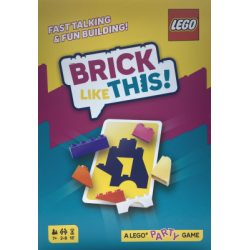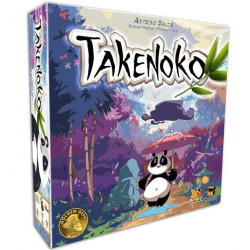No products in the cart.
Active filters
Brick Like This!
In Brick Like This!, players compete in teams to complete LEGO models as quickly as possible, with one teammate describing the model to another teammate who builds it.
In Brick Like This!, teams of two, one Instructor and one Builder, are tasked with building a shape out of LEGO bricks. The Instructor will tell the Builder how to build a shape on a Shape Card that only the Instructor can see. All teams play at the same time, racing to build their shapes the fastest. The winner is the team with the most points at the end of six rounds!
Rorschach
Rorschach, named after the Swiss psychiatrist Hermann Rorschach, uses some of his famous inkblot images (and many new ones) to put two teams to the test. The teams earn points by correctly guessing how their members paired randomly selected words with these inkblot images.
Tic Tac Trek
Explore the wilds in a 2-player tile-laying simple strategic game. The closer you camp to the unexplored wilderness, the higher you\'ll score.
Takenoko
A long time ago at the Japanese Imperial court, the Chinese Emperor offered a giant panda bear as a symbol of peace to the Japanese Emperor. Since then, the Japanese Emperor has entrusted his court members (the players) with the difficult task of caring for the animal by tending to his bamboo garden.
In Takenoko, the players will cultivate land plots, irrigate them, and grow one of the three species of bamboo (Green, Yellow, and Pink) with the help of the Imperial gardener to maintain this bamboo garden. They will have to bear with the immoderate hunger of this sacred animal for the juicy and tender bamboo. The player who manages his land plots best, growing the most bamboo while feeding the delicate appetite of the panda, will win the game.
Takenoko
A long time ago at the Japanese Imperial court, the Chinese Emperor offered a giant panda bear as a symbol of peace to the Japanese Emperor. Since then, the Japanese Emperor has entrusted his court members (the players) with the difficult task of caring for the animal by tending to his bamboo garden.
Takenoko: Chibis
A long time ago, the Emperor of China offered to the Emperor of Japan a giant panda, a symbol of peace. Your delicate mission: Take care of the animal by planning a bamboo field. Now as a reward for your great work, you are being offered a second panda...a female!












